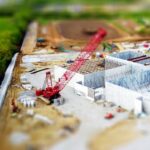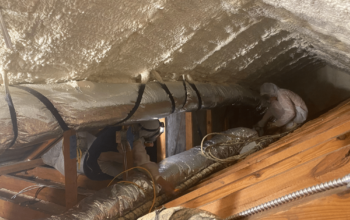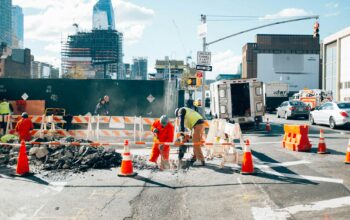Also called fracking, hydraulic fracturing is the process of injecting a fluid into a wellbore to puncture cracks in the rock, deep inside the earth’s surface. These cracks so formed make way for the natural gas and oil to flow more freely. The fluid used is hydraulic and is injected at significantly higher pressures.
Beginning as an experiment in the late 40s, the process has come a long way. It has become a vital part of the oil and gas service worldwide. With the applications in the industry, came so many controversies on its way. Experts believe that fracking is responsible for water contamination, and significantly higher levels of air and water pollution. Some even claim that hydraulic fracturing triggers the earthquakes. Although the geographical risks are a matter of debate, the health and life risks to the workers of the field are real.
Fracking, in the oil & gas industry, is no different than any other operation in the field when it comes to the safety hazards of the workers. The companies working in this area have to follow some specific guidelines from the government and also their own project targets to increase safety and efficiency on a frac pad at the same time.
Risk of falling from heights
Those working on the frac pads have to replace the lubricator and nightcap assembly at hundreds of feet above the ground. Working at these heights, even with a few safety parameters, can be a grave danger to the life of the workmen. To remove, and finally eliminate this threat, the oil & gas exploration firms have gradually begun to install the riglock package on the wellhead. Designed to improve the safety features, this equipment makes it possible for the workers to move away from the danger zones on the pad.
The manual task, with the help of this equipment, is now being done automatically. The machine operators, now, finish the task of a worker who earlier had to do this dangerous work manually. Even if not entirely, it has helped remove one of the threats to the life of people in the work field.
Exposure to Silica
Workers on a frac pad are exposed to high concentrations of silica. Inhaling silica in large amounts leads to the development of incurable lung and kidney diseases. The data reflects that dust formed during fracking may have more crystalline silica in it than any other silica generating industry.
Investigations have been conducted on some frac pads in past which reported that more than thirty percent of the samples had crystalline silica way beyond the regulatory limits.
Besides silica, the workers are exposed to certain other health hazards which include exposure to diesel particulate matter and benzene.
Local Residents are at equal danger
Not in all aspects, but in case of inhalation of toxic gases; this is true. People who live close to the operational fields are at equal risk. There are no safety barriers to prevent the harmful dust from going to the surrounding areas. Along with this, the vehicle collision is a threat to everyone as well. The heavy trucks that pose a threat to the workers do the same with the locals.
Then is the contamination of water that the whole population gets to drink. The health hazards of this field are in such vast numbers that they overshadow its role in the economic and employment growth of the nations where practiced.
Bottom Line
This is high time that industry pays some attention to the problems of its workers. People are at such great risks of even losing their lives that it cannot be overlooked any further. As they say, doesn’t matter a cat is black or brown, as long as it catches mice. This applies to the industry in a way that no matter how much growth it brings on the commercial basis, there’s no benefit, as long as it takes the human lives.
Related Posts















